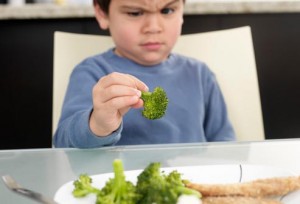
image via livescience.com
It’s the week of you’re biggest final exam, and if you do not get an A, you will end up failing the course. All week you sit and stare at your notes, feeling like you are accomplishing something but really nothing is happening. Then you remember the dude down the hall has adderall and sells it for just a few bucks a pill. You go and buy some and after taking the pill you become much more focused on studying. Then you begin buying regularly from the dude down the hall until you need to take it every day. When you don’t take it, you feel tired and unfocused. This is the process of your brain developing a dependency on the drug. Up front, I would like to say that this post is neither condoning or promoting the use of non-prescribed adderall.
Adderall’s intended use

image via forbes.com
Adderall is a drug that contains a mixture of amphetamine and dextroamphetamine (Dodson). It is used to treat ADHD. ADHD, Attention-Deficit Hyperactive Disorder, is pretty much what it’s name describes it as; affected individuals have trouble keeping their attention focused on one thing and may also be disruptive. It is found in mostly children, only about 5%, and this is when the first diagnosis usually occurs. An individual diagnosed with ADHD will most likely receive a prescription for adderall. At first, the individual may start out on a very small dose but may have to increase dose size if a tolerance builds up. Adderall is a very effective drug when used properly. It contains chemicals to stimulate the brain in a way that replaces the chemicals the brain fails to produce (the lack of these chemicals is what causes ADHD). Use of adderall causes the complications associated with ADHD to be dulled and for the effected individual to function at a normal cognitive level. For this purpose, adderall is a very helpful drug.
Non-Prescribed Uses
Because of adderall’s benefit to bettering focus, many people, who are not prescribed the drug, take it for personal use. Some do so for the high, but most are using adderall to better focus on school work. In fact, A study at the University of Kentucky found 30% of students reported using adderall as a way to study better. While it may be very helpful, it is very illegal for someone to take adderall that is not prescribed it and for someone who is prescribed to distribute it.
Complications with non-prescribed use
People are prescribed adderall because they lack certain chemicals in their brain. The drug is used, in these individuals, to bring the chemicals back to a normal level. An individual who is not diagnosed with ADHD normally has sufficient levels of these chemicals in the brain. When they take an adderall, or when someone prescribed takes more than recommended, the levels of these chemicals in the brain rises above normal. This induces a state of high attention and ability to focus on certain tasks, or just a kick ass high. There is a problem associated with this process. The human body works to regulate chemicals in the body, producing more of something you need and less of things you don’t. When an individual continually uses adderall to boost chemical levels in the brain, the brain will begin to produce less of those chemicals. This process of regulation in the body lowers the amount of chemicals produced because the adderall is acting as a supplement. Therefore, when the individual stops taking the adderall, they may lack the chemicals in the brain that the adderall was boosting, leading them to need more adderall.
Comment opinions/suggestions below.
Sources
https://www.drugs.com/health-guide/attention-deficit-hyperactivity-disorder-adhd.html
http://americanaddictioncenters.org/adderall/long-term-effects/
http://www.additudemag.com/adhd-web/article/11070.html










